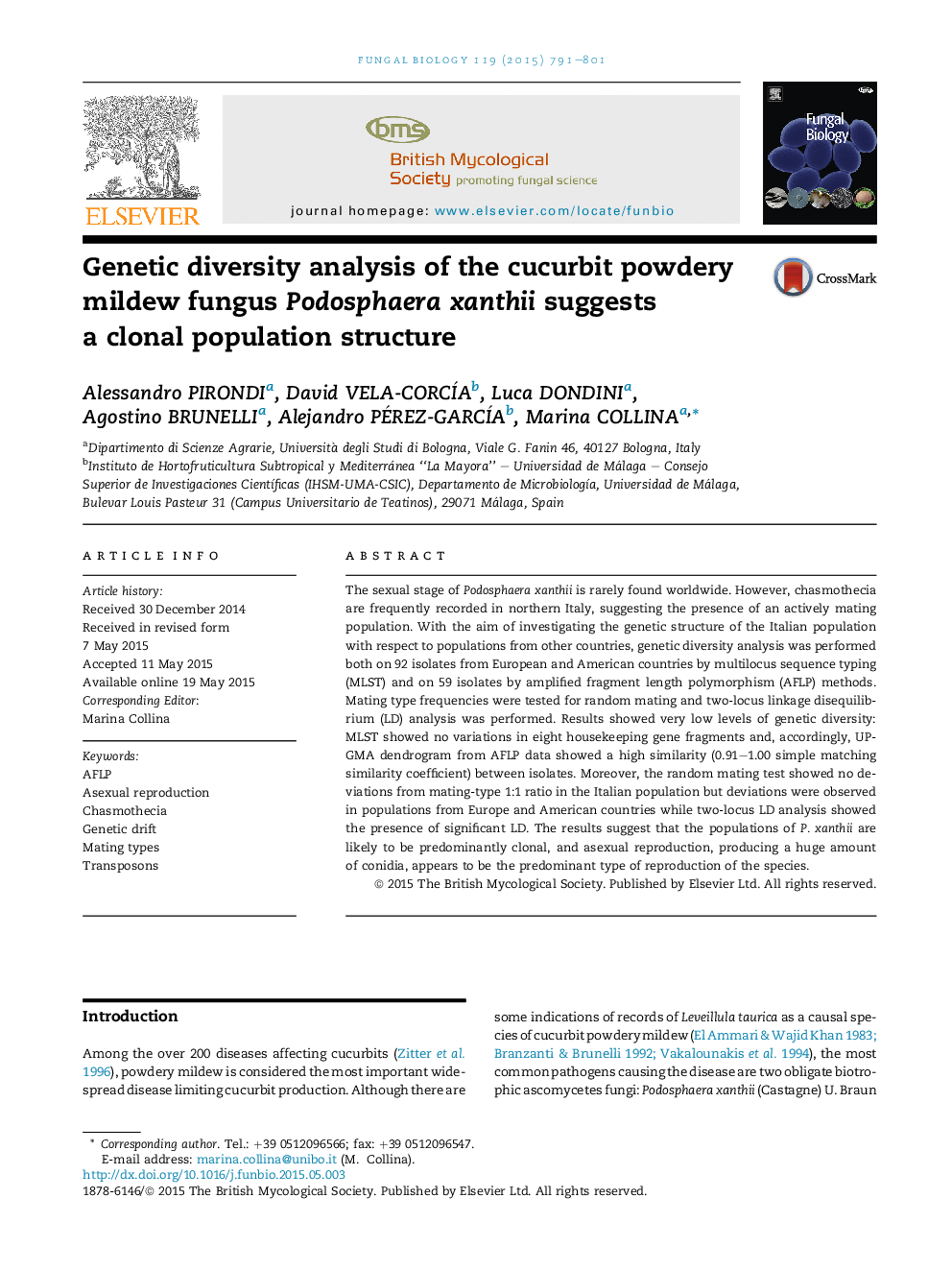| Article ID | Journal | Published Year | Pages | File Type |
|---|---|---|---|---|
| 4356909 | Fungal Biology | 2015 | 11 Pages |
•The genetic structure of Podosphaera xanthii was investigated by MLST and AFLP analyses.•Low levels of genetic diversity were revealed by both techniques.•Elements associated with transposons were identified from AFLP band sequencing.•Differences between populations were observed when mating type frequencies were tested for random mating.•Significant pairwise associations were observed in linkage disequilibrium analysis.
The sexual stage of Podosphaera xanthii is rarely found worldwide. However, chasmothecia are frequently recorded in northern Italy, suggesting the presence of an actively mating population. With the aim of investigating the genetic structure of the Italian population with respect to populations from other countries, genetic diversity analysis was performed both on 92 isolates from European and American countries by multilocus sequence typing (MLST) and on 59 isolates by amplified fragment length polymorphism (AFLP) methods. Mating type frequencies were tested for random mating and two-locus linkage disequilibrium (LD) analysis was performed. Results showed very low levels of genetic diversity: MLST showed no variations in eight housekeeping gene fragments and, accordingly, UPGMA dendrogram from AFLP data showed a high similarity (0.91–1.00 simple matching similarity coefficient) between isolates. Moreover, the random mating test showed no deviations from mating-type 1:1 ratio in the Italian population but deviations were observed in populations from Europe and American countries while two-locus LD analysis showed the presence of significant LD. The results suggest that the populations of P. xanthii are likely to be predominantly clonal, and asexual reproduction, producing a huge amount of conidia, appears to be the predominant type of reproduction of the species.
